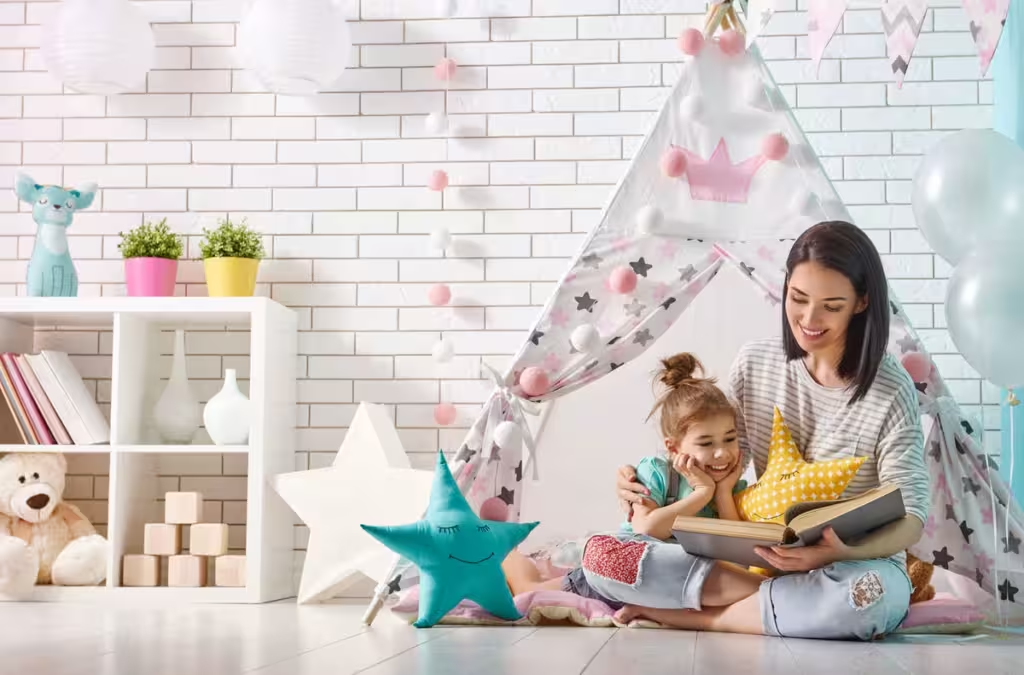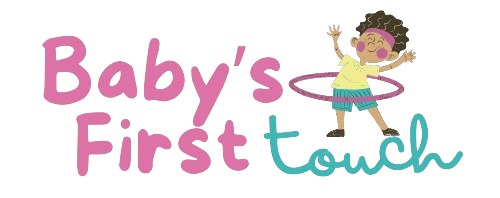Creating a baby-friendly home is essential for ensuring the safety, comfort, and well-being of your little one. As babies grow and explore, their environment needs to be adapted to meet their developmental needs and keep them safe from potential hazards. This comprehensive guide will provide you with detailed steps and tips on how to baby-proof your home, making it a safe haven for your baby.
Initial Preparations
Conducting a Home Safety Audit
Before you start baby-proofing, conduct a thorough home safety audit. Walk through each room, identifying potential hazards and areas that need attention. Take notes on:
- Sharp edges and corners
- Small objects that could be choking hazards
- Unsecured furniture
- Accessible electrical outlets and cords
Creating a Baby-Proofing Checklist
Based on your audit, create a detailed baby-proofing checklist. This list will guide you through the process and ensure that no area is overlooked. Key items on the checklist should include:
- Outlet covers and cord organizers
- Corner protectors and edge bumpers
- Cabinet and drawer locks
- Furniture anchors
Living Room Safety
Securing Furniture and Heavy Items
In the living room, secure heavy furniture to the walls to prevent tipping. This includes bookshelves, TV stands, and cabinets. Use furniture straps or brackets to anchor these items securely.
Safe Storage Solutions for Fragile and Dangerous Items
Store fragile items, such as glassware and ceramics, out of reach or in locked cabinets. Ensure that dangerous items, like remote controls with batteries and small objects, are stored safely.
Creating a Safe Play Area
Designate a safe play area in the living room where your baby can explore without risk. Use a playpen or baby gates to create a contained space. Ensure that toys within this area are age-appropriate and free from small parts that could be choking hazards.

Kitchen Safety
Baby-Proofing Cabinets and Drawers
Install locks on lower cabinets and drawers to keep your baby from accessing harmful items, such as cleaning supplies and sharp objects. Magnetic locks are an effective and discreet option.
Managing Appliances and Electrical Outlets
Keep small appliances, like toasters and blenders, unplugged and out of reach when not in use. Use outlet covers to prevent your baby from inserting fingers or objects into electrical sockets.
Safe Food Storage and Handling
Ensure that all food is stored securely and out of reach. Use childproof locks on the refrigerator and pantry doors. Be mindful of hot surfaces and liquids when cooking, and always use back burners and turn pot handles inward.
Bathroom Safety
Preventing Slips and Falls
Place non-slip mats in the bathtub and on the bathroom floor to prevent slips. Ensure that your baby is never left unattended in the bathtub, even for a moment.
Safe Storage of Medications and Cleaning Supplies
Store all medications, toiletries, and cleaning supplies in locked cabinets. Consider using a high shelf for additional safety. Keep products in their original packaging to avoid confusion.
Bathtub and Toilet Safety Measures
Use a faucet cover to protect your baby from bumps and burns. Install a toilet lock to prevent your baby from opening the lid and playing with the water or falling in.
Nursery Setup
Choosing Safe Furniture and Decorations
Select furniture that meets safety standards, such as cribs with slats no more than 2 3/8 inches apart. Avoid decorations with small parts or strings that could pose a choking or strangulation hazard.
Creating a Comfortable Sleep Environment
Use a firm mattress with a fitted sheet in the crib. Keep the crib free of pillows, blankets, and stuffed animals to reduce the risk of suffocation. Maintain a comfortable room temperature and use a baby monitor for peace of mind.
Organizing Baby Essentials
Organize baby essentials, like diapers, wipes, and clothes, in easy-to-access but out-of-reach places. Use storage bins and baskets to keep items tidy and within arm’s reach during diaper changes.
Bedroom Safety
Making Adult Bedrooms Baby-Safe
If your baby spends time in your bedroom, ensure that it’s baby-proofed. Secure heavy furniture, cover outlets, and keep small objects, like jewelry and coins, out of reach.
Ensuring Safe Co-Sleeping Practices
If you co-sleep, follow safe sleep guidelines. Use a firm mattress, avoid heavy blankets, and never co-sleep on a couch or armchair. Consider using a co-sleeper bassinet attached to your bed.
Creating Safe Sleeping Spaces for Visiting Babies
When hosting friends or family with babies, ensure you have a safe sleeping space. Use a travel crib or playpen with a firm mattress and follow the same safety guidelines as you would for your own baby.
Outdoor Safety
Securing Yards and Play Areas
Fencing your yard provides a safe play area for your baby. Ensure gates are locked and check for gaps or holes where a baby could crawl through. Remove any hazardous plants or objects.
Pool Safety Precautions
Install a fence around your pool with a self-closing, self-latching gate. Keep pool toys and floats out of reach when not in use to prevent your baby from being tempted to reach for them.
Safe Gardening Practices
Keep gardening tools and chemicals locked away. Be mindful of small stones, sharp objects, and toxic plants that could pose a danger to your baby.
General Household Safety
Managing Electrical Hazards
Cover all unused electrical outlets with safety covers. Use cord shorteners to keep long cords out of reach and secure them to the wall where possible.
Safe Use of Stairs and Balconies
Install baby gates at the top and bottom of stairs. Ensure that railings on stairs and balconies are secure and that gaps are too narrow for your baby to fit through.
Fire Safety Measures
Install smoke detectors on every floor and test them regularly. Keep fire extinguishers accessible, and create a fire escape plan. Avoid using candles and open flames in areas accessible to your baby.
Toys and Playtime Safety
Choosing Safe Toys
Select toys that are appropriate for your baby’s age and development stage. Ensure they are free from small parts, sharp edges, and toxic materials.
Organizing Play Areas
Keep play areas organized to prevent tripping hazards. Use bins and shelves to store toys, and rotate them regularly to keep your baby engaged.
Supervising Playtime Activities
Always supervise your baby during playtime. Engage with them and provide safe, interactive toys that promote development and learning.
Pet Safety
Introducing Pets to a New Baby
Gradually introduce your pet to the new baby, providing positive reinforcement. Ensure that pets have their own safe space away from the baby’s reach.
Managing Pet Behavior Around Babies
Monitor interactions between pets and your baby closely. Teach pets gentle behavior and ensure that your baby doesn’t pull on fur or ears.
Ensuring a Clean and Safe Environment for Pets and Babies
Keep pet areas clean and free from baby toys. Regularly vacuum and wash hands after handling pets to maintain hygiene.
Travel and Mobility Safety
Baby-Proofing Cars and Strollers
Use a car seat appropriate for your baby’s age and weight, and ensure it is installed correctly. Use a stroller with safety features like a five-point harness and brakes.
Safe Practices for Baby-Wearing
Choose a baby carrier that supports your baby’s head and neck. Ensure the carrier fits snugly and that your baby’s airways are clear.
Planning Safe Family Outings
Plan outings with safety in mind. Bring essential items like a first aid kit, snacks, and water. Choose baby-friendly locations with safe environments.
Health and Hygiene
Maintaining Clean and Germ-Free Spaces
Regularly clean and disinfect surfaces, especially in areas where your baby plays and eats. Use baby-safe cleaning products.
Establishing Safe Diaper Changing Practices
Set up a dedicated diaper changing area with all necessary supplies within reach. Use a changing pad with raised sides and a safety strap.
Ensuring Safe Bathing and Grooming Routines
Use a baby bathtub with a non-slip surface. Keep water temperature lukewarm, and never leave your baby unattended in the bath.

Eco-Friendly Baby-Proofing
Choosing Non-Toxic and Eco-Friendly Products
Opt for products made from natural, non-toxic materials. Look for certifications indicating eco-friendly manufacturing processes.
Sustainable Practices for a Baby-Friendly Home
Implement sustainable practices, such as using cloth diapers and reducing plastic use. Choose furniture and toys made from sustainable materials.
Benefits of an Eco-Friendly Home for Babies
An eco-friendly home reduces exposure to harmful chemicals and supports a healthier environment for your baby’s growth and development.
Emergency Preparedness
Creating an Emergency Plan
Develop an emergency plan detailing steps to take in case of fire, natural disasters, or medical emergencies. Ensure all family members are familiar with the plan.
Stocking a First Aid Kit
Keep a well-stocked first aid kit in an accessible location. Include items like bandages, antiseptics, and any medications your baby might need.
Training for Basic First Aid and CPR
Take a first aid and CPR course to be prepared for emergencies. Ensure that caregivers and family members are also trained.
Parent Resources
Books and Online Resources
There are many books and websites that provide valuable information on baby-proofing and child safety. Recommended titles include:
- “The Babyproofing Bible” by Jennifer Bright Reich
- “Safe Baby Handling Tips” by David Sopp and Kelly Sopp
Parenting Classes and Workshops
Enroll in parenting classes and workshops that cover baby safety and development. Many hospitals and community centers offer these programs.
Connecting with Other Parents for Support
Join parent groups and online communities to share experiences and get advice. Connecting with other parents can provide emotional support and practical tips.


